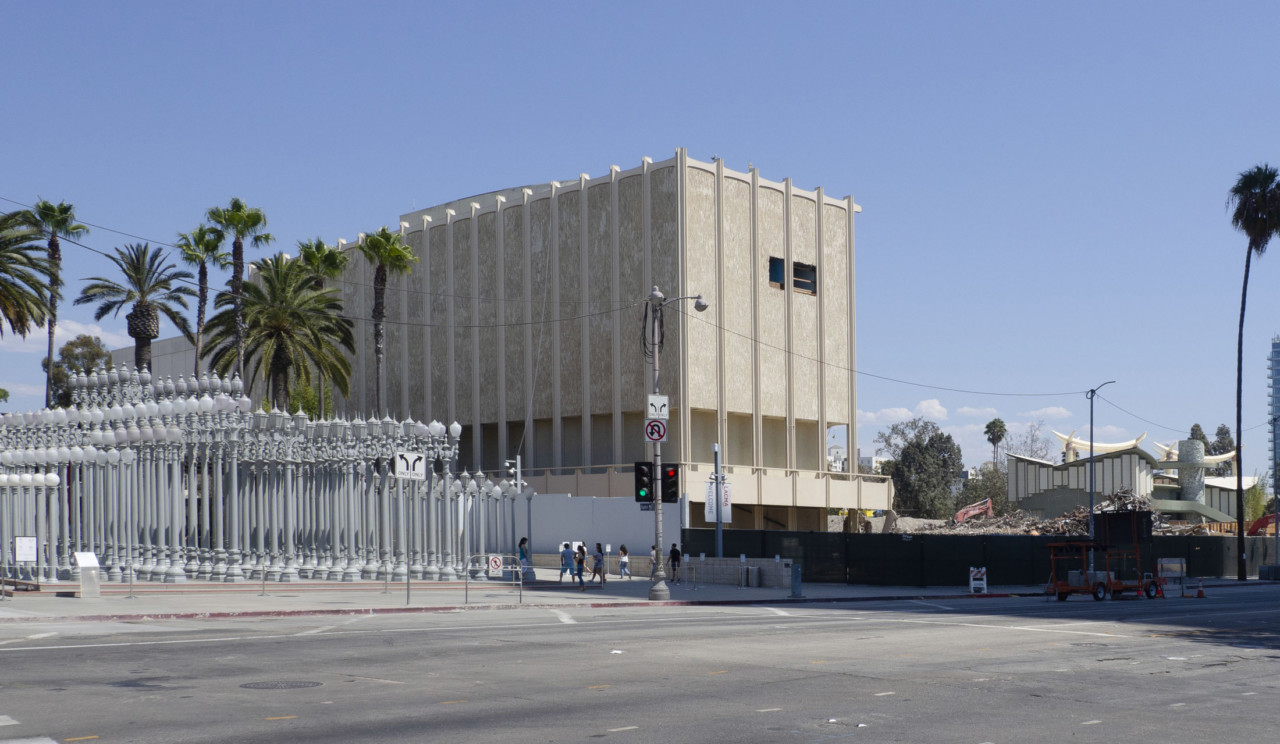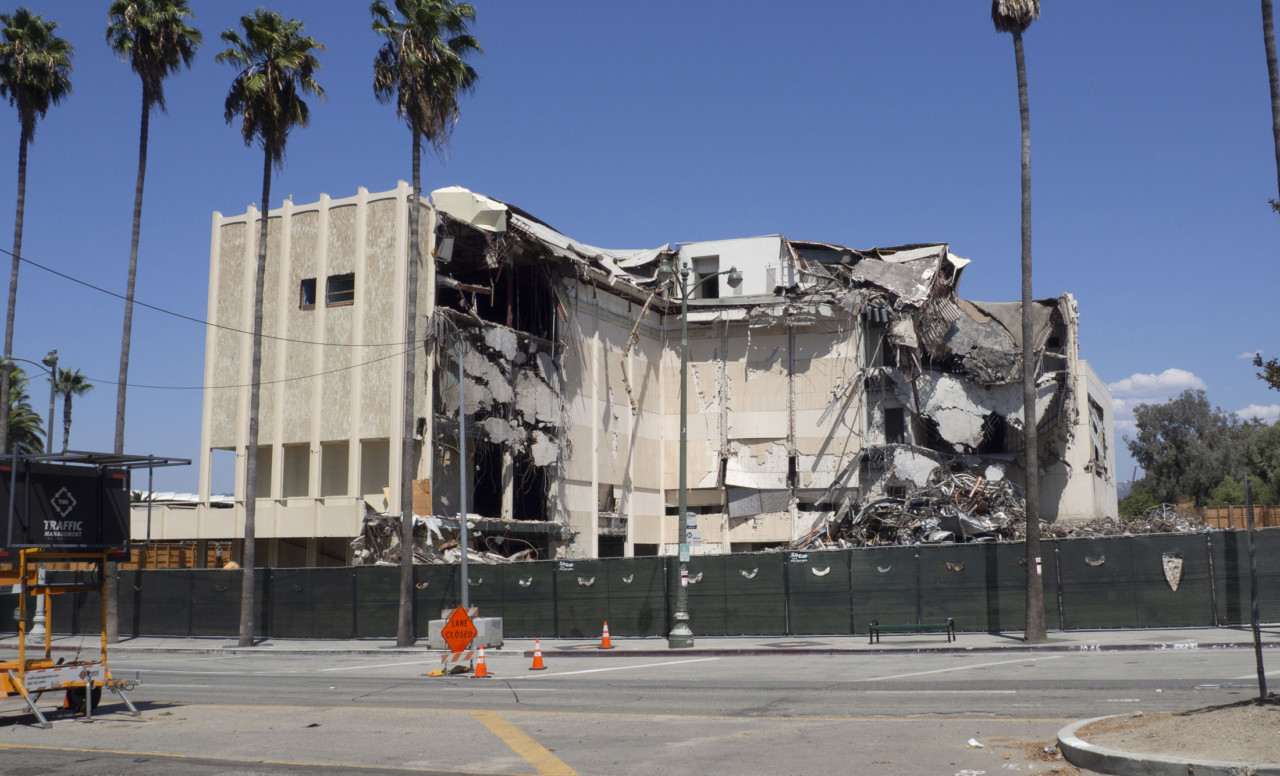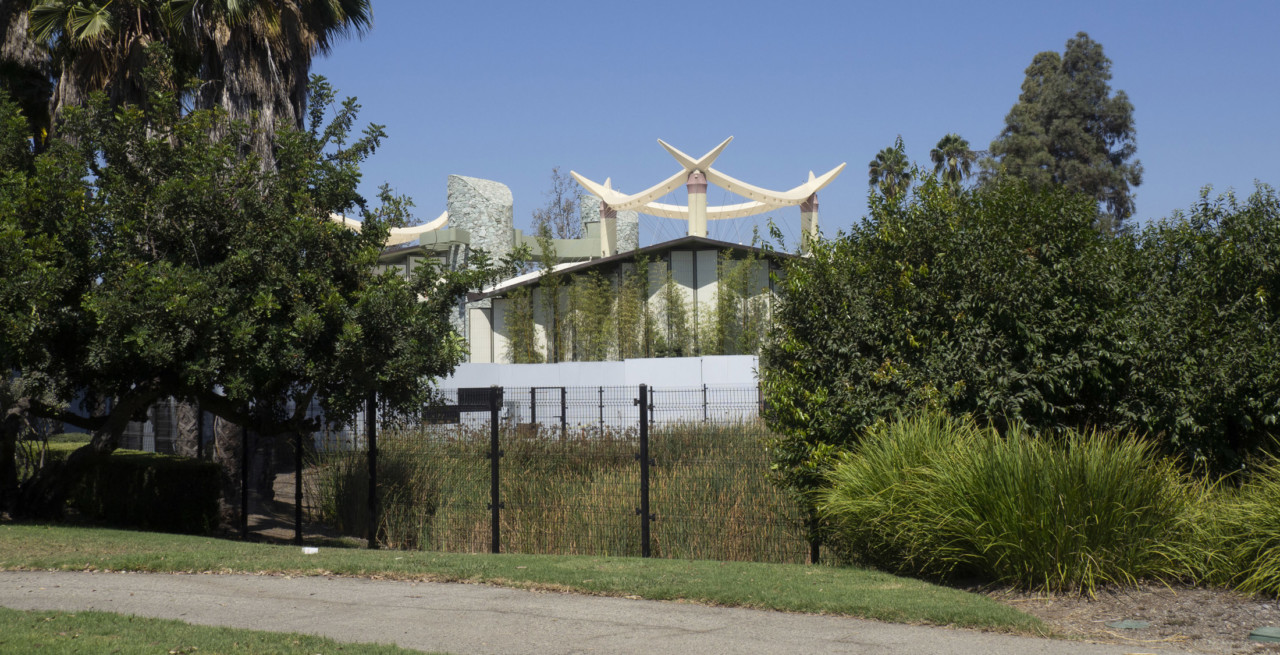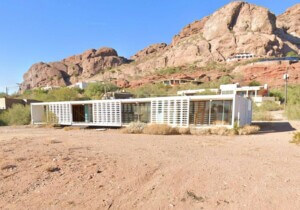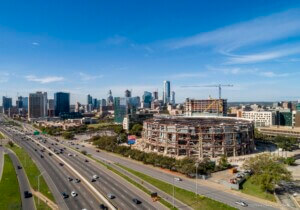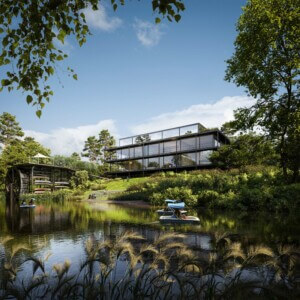No sooner had the prolific architect William Pereira unveiled his design for the Los Angeles County Museum of Art (LACMA) in the Spring of 1965 than a young Ed Ruscha began imagining its demise. Three years later, the artist unveiled The Los Angeles County Museum of Fire (1965–68), in which a corner of the otherwise pristine cultural complex is depicted burning, without a soul nearby to put out the flames.
Today, only a forlorn segment of the Ahmanson Building—one of Pereira’s three buildings, and the one Ruscha set ablaze—remains of the original campus.
Ruscha was merely channeling the anti-establishment sentiments of the city’s fledgling art scene. It would take a cultural mandarin, current LACMA director Michael Govan, to turn that destructive fantasy into reality. This past spring, Govan gave the go-ahead to raze Pereira’s ensemble—the Ahmanson and Hammer Buildings and the Bing Theatre—plus the Hardy Holzman Pfeiffer Associates-designed Art of the Americas gallery. The demolition, which commenced in the early weeks of the COVID-19 pandemic and is now entering its final phases, would ready the ground for a new museum campus designed by Pritzker Prize-winning architect Peter Zumthor. (Govan’s wrecking ball spared a pair of relatively youthful facilities by Renzo Piano Workshop.)
Calling for an amorphous tabletop spanning Wilshire Boulevard, the Zumthor project has courted—some might say stoked—controversy ever since it was made public back in 2013.
Even after enduring several design alterations, the project emerged on the other side with its basic premise intact. The city approved of the final blueprints in 2019, and not long after, LACMA staff released a timeline culminating with the year 2024, or when the Zumthor mega-building is set to open. Until then, the museum promised that other galleries on the campus, including the Resnick Pavilion, the Broad Contemporary Art Museum, and the Japanese Art Pavilion, would remain accessible to the public.
Vocal detractors of the new LACMA, hoping that the pandemic-induced lockdown would buy the opposition much-needed time, were frustrated by Govan’s resolve to forge ahead. Speaking to the Los Angeles Times in late March, Govan maintained that demolition plans would proceed as scheduled and, what’s more, would be “an engine of job creation and economic recovery” for the city amid uncertain times. LACMA spokesperson Jessica Youn made clear that Clark Construction, the firm charged with the teardown and subsequent building, continues to follow the precautions laid out by the Center for Disease Control (CDC) and will do so as it pursues construction.

One by one, the venerable pieces fell like dominoes on the Wilshire stage. First came the Bing Theatre in early April, with the multipurpose Hammer Building following a few weeks later. In August, a detonation made quick work—mere seconds, in fact—of the Art of the Americas Building. A fragment of the Ahmanson Building is the lone holdout and is expected to be fully razed by the end of the year. Tourists continue to line up for selfies with Chris Burden’s Urban Light (2008) while the half-demolished gallery lies haggard in the background.
The lengthy demolition schedule, to say nothing of the spectacle itself, had turned the doomed structures into muses for local artists and photographers. The filmmaker and photographer Phil Donohue, for example, recently documented the desultory, if poetic, state of the Ahmanson, juxtaposing one near-immaculate half with a scrap heap. The East Hollywood–based artist Molly Schulman, meanwhile, has incorporated the ruins into her Uninvited Interventions series, which plays with the iconography of classical architecture. At Wilshire, she tossed cardboard cutouts of Doric columns over the construction fence, photographing them through the chainlink.
The clearance of LACMA’s large, stately buildings has produced another, more unexpected outcome. After decades of hiding, the sensational Pavilion for Japanese Art is no longer concealed by a cover of metal, marble, and trees. Completed in 1988 to the designs of the otherworldly architect Bruce Goff, the small building has been pushed into the spotlight, its rib-like headdress, translucent panels, and stony centerpiece shining against a temporary backdrop of rubble. Fortuitously, Zumthor’s cranked-up, tabletop design will largely preserve the pavilion’s newfound visibility.
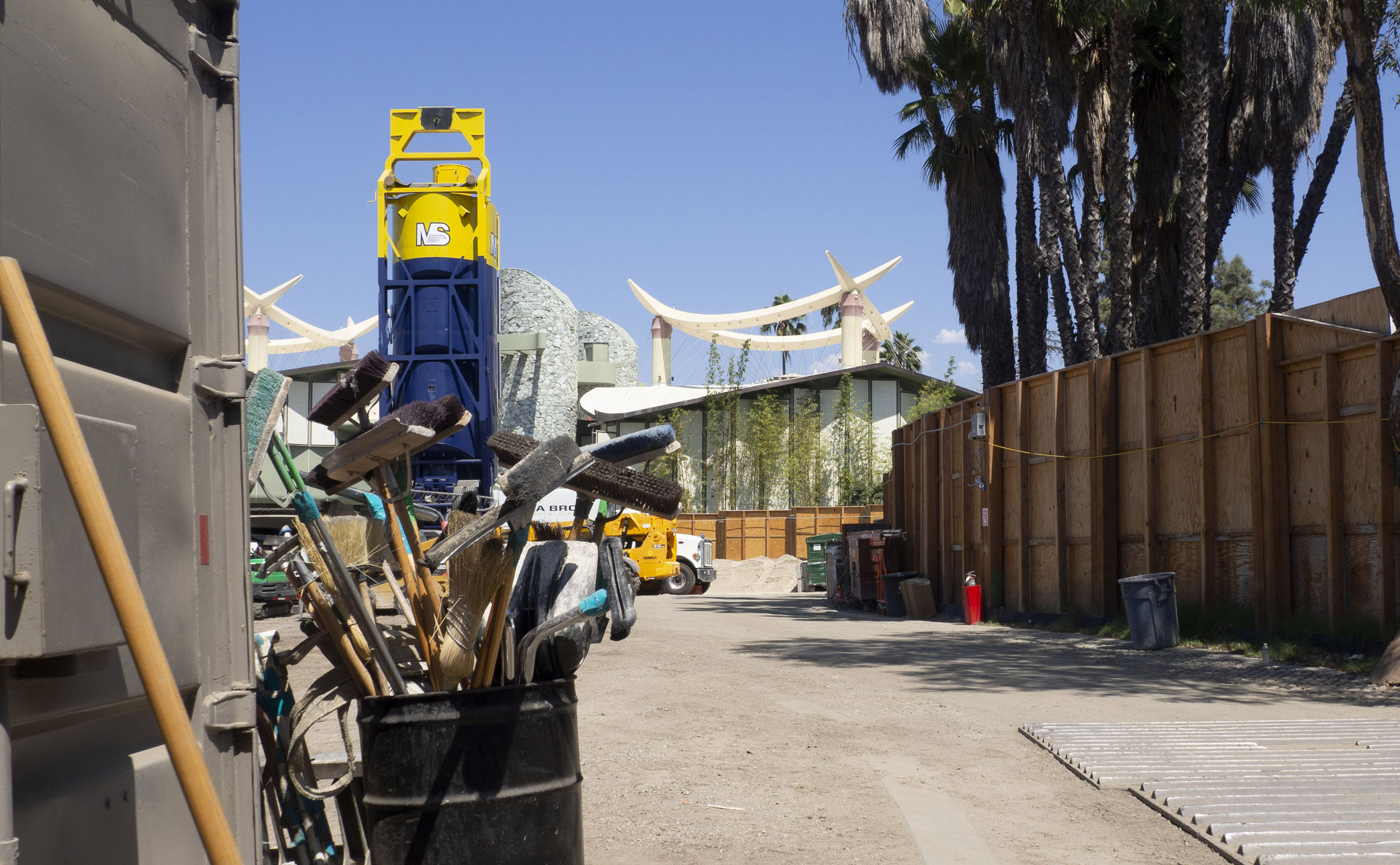
Across Spaulding Avenue, on the site of a former parking lot, the first pieces of Zumthor’s bridging design are rising. When construction of the larger part of the new building is completed, following the total demolition of the Ahmanson building sometime this year, the bridging element will be installed over Wilshire with as little interruption to automobile traffic as possible.
While LACMA is currently closed due to the coronavirus, like the majority of museums around the country, the surrounding parkland—and the wider 34-acre Hancock Park—remains open to the public, allowing locals and tourists alike an opportunity to see the last vestiges of the city’s first major art institution from all angles, but only for a limited time.






